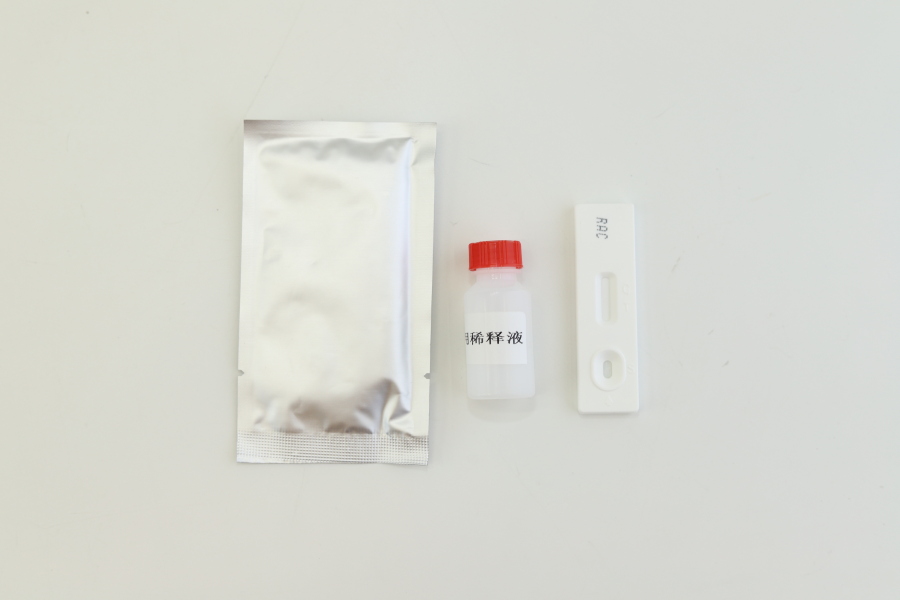
organophosphorus pesticides such as dimethyl and dimethyl have been widely used in agricultural production for a long time to control pests, but their residues may pose a potential threat to human health. Therefore, it is essential to establish a fast, accurate and efficient detection process to ensure food safety. Wuhan Yupinyan Bio focuses on the research and development and production of food safety rapid detection reagents. Its related products have been widely used in the rapid screening of various organophosphorus pesticides.
The first step of the detection process is sample preparation. According to different sample types (such as vegetables, fruits, grains, etc.), a representative sampling method is adopted. The sample is chopped or homogenized to ensure its uniformity to improve the accuracy of the test results. Weigh a certain amount of the sample and place it in a centrifuge tube or homogeneous bag, and add a specific extract. The function of the extract is to effectively separate the organophosphorus pesticides in the sample from the matrix. Subsequently, sufficient extraction is carried out by means of oscillation, vortex or homogenization, etc., so that the pesticides are dissolved into the extract.
After the extraction is completed, the necessary purification and centrifugation steps are carried out. The purification process aims to remove interfering substances in the sample matrix, usually by solid phase extraction or simple filtration. Centrifugation is to separate the extract from the sample residue and obtain a clarified supernatant, that is, the liquid to be tested. This step is crucial for the sensitivity and specificity of subsequent detection.
Next is the key detection reaction link. Use the organophosphorus pesticide rapid detection reagent strip or detection card produced by Wuhan Yupinyan Biological. First, add the liquid droplets to be detected to the sample well or reaction cup of the reagent strip. If the reagent based on the principle of enzyme inhibition method is used, the corresponding enzyme solution and substrate need to be added. The specific antibody or enzyme in the reagent will specifically bind or inhibit the organophosphorus pesticide in the detection solution. The reagent strip/card is placed in a suitable temperature environment for a certain period of time, usually a few minutes to ten minutes.
After the reaction is completed, the results are interpreted. For the colloidal gold immunochromatography test strip, the results are judged by observing the color development of the detection line (T line) and the quality control line (C line). If the C-line is colored and the T-line is also colored, and the color depth is within the specified range after comparison with the standard, it is negative, indicating that the organophosphorus pesticide residue in the sample is lower than the detection limit; if the T-line is not colored or the color is significantly lighter than the standard, it is positive, indicating that there may be excessive residues. For other types of rapid detection reagents, such as enzyme-linked immunosorbent assay (ELISA) kits, the absorbance value is read by the enzyme labeling machine, and the approximate content of pesticides in the sample is calculated by comparing it with the standard curve.
During the entire detection process, the operating requirements of the reagent instructions must be strictly followed, including the storage conditions of the reagent, the equilibrium time, the amount of sample added, the reaction temperature and time, etc. At the same time, positive and negative controls are set to ensure the effectiveness of the experimental system Wuhan Yupinyan Bio's rapid detection reagents have the advantages of simple operation, short time consumption and low cost, providing strong technical support for grass-roots regulatory departments, food production enterprises and testing institutions, and helping to quickly screen out samples with excessive organophosphorus pesticide residues, so as to take timely control measures to ensure the safety of the public's diet.
Finally, the tested waste should be properly handled in accordance with relevant regulations to avoid pollution to the environment. Through the above standardized testing process, it is possible to quickly and effectively screen for organophosphorus pesticide residues such as diethyl and diethyl, adding an important part to the food safety defense line. Wuhan Yupinyan Bio will continue to work on improving the performance of detection reagents and contribute to the field of food safety testing.

